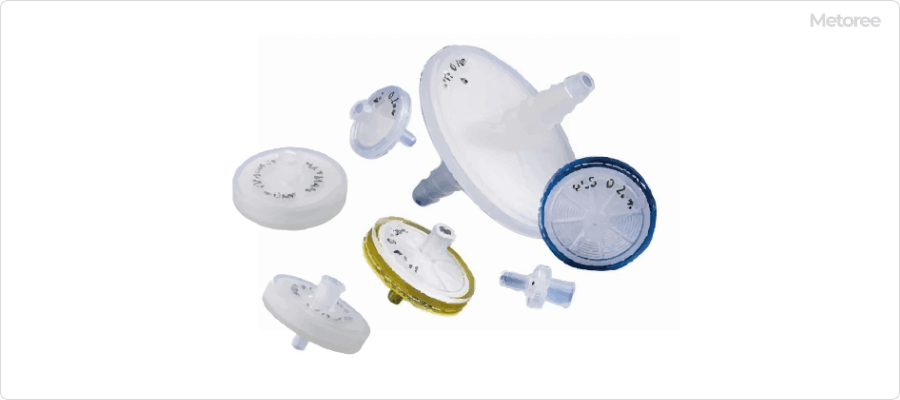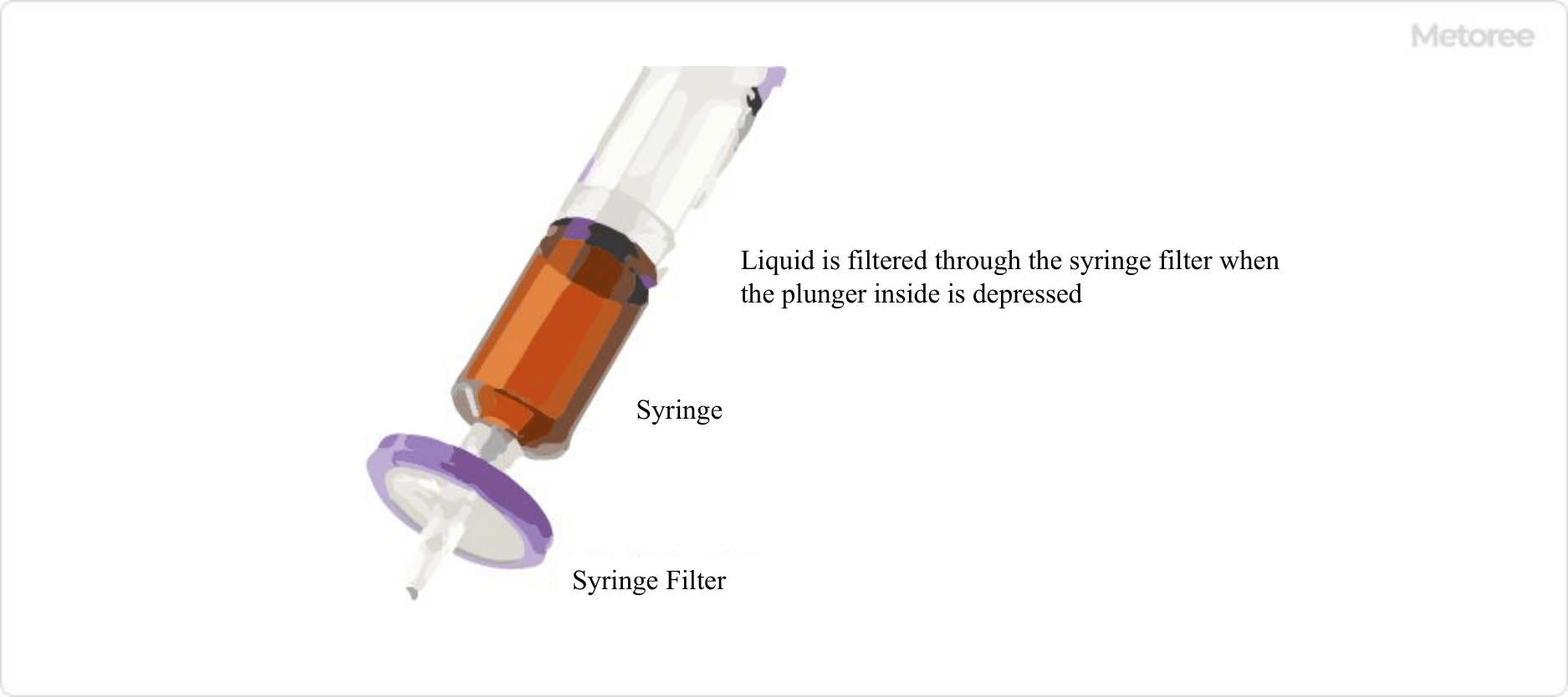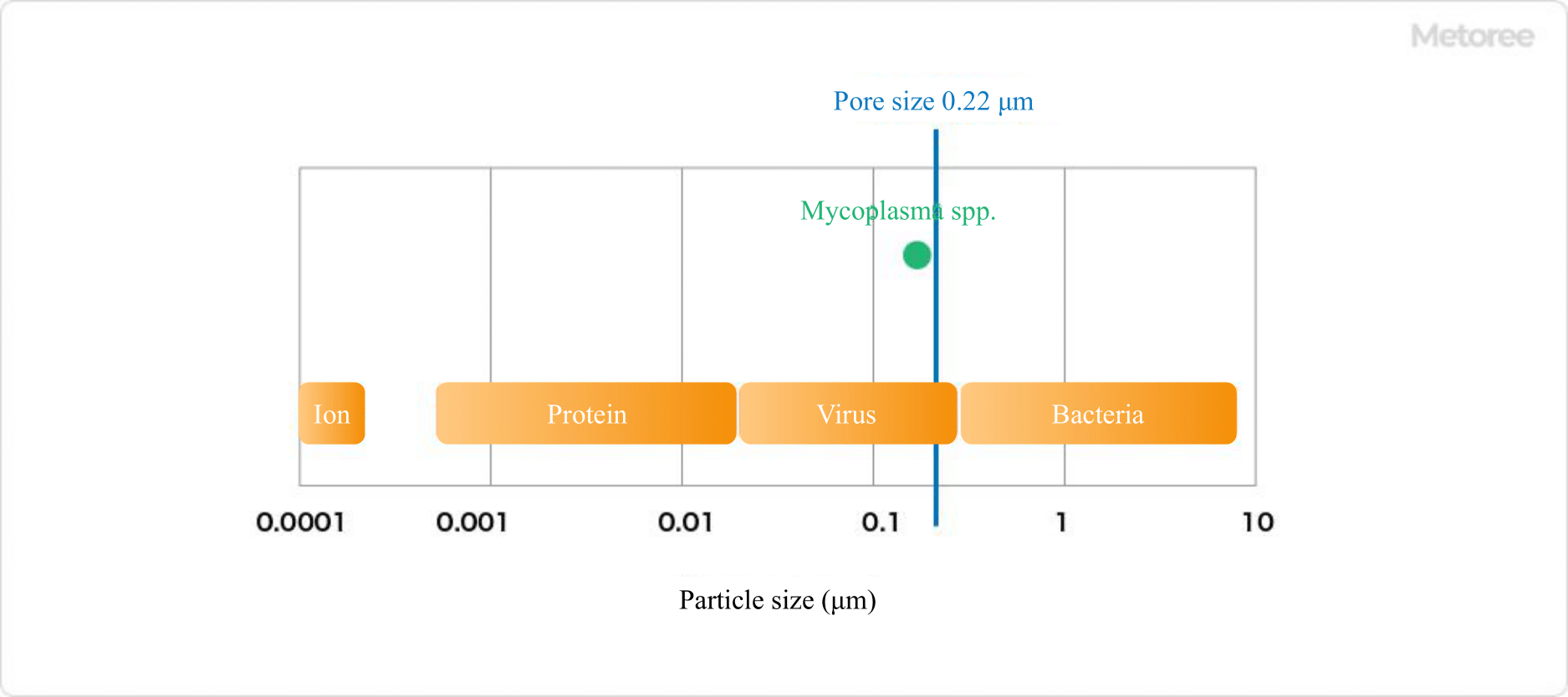What Is a Syringe Filter?

Figure 1. Syringe filter
A Syringe Filter is a disk-type filter that is attached to the end of a syringe.
It is used to remove particulate impurities from a liquid sample. When a syringe filter is attached to the tip of a syringe, the solution passes through the filter as it is pushed out, and insoluble matter is removed.
The filter part is made of PTFE (polytetrafluoroethylene) or PVDF (polyvinylidene fluoride). The material is selected based on the characteristics of the solvent and the target material to be removed. Since there are a variety of pore sizes, the most appropriate filter should be selected according to the size of the particles to be removed.
Syringe Filters are usually used on a disposable basis.
Uses of Syringe Filters
The main applications of syringe filters include sample purification and pretreatment of various analytical samples. Major analytical methods include HPLC, ion chromatography, gas chromatography, ICP, and dissolution testing. They are also used in general filtration to remove fine impurities in aqueous solutions and organic solvents.
Another application is sterilization, where bacteria smaller than the pore size of the filter are removed by filtration. In this case, an appropriate sterilization filter must be used.
Syringe filters themselves, like membrane filters, are not very large and can only capture particles on their surface. If there is a large amount of insoluble material, another pretreatment should be performed beforehand to remove most of the insoluble material.
Principle of Syringe Filter

Figure 2. How a syringe filter works
A syringe filter consists of a disc-shaped filter in a plastic case. The plastic case has a protrusion with a hole at each end. When a syringe is attached to one end and the plunger of the syringe is depressed, the solution flows through the filter and out the other protrusion. As the solution passes through the filter, particles larger than the filter’s pore size are intercepted and insoluble material is removed.
Filters are available in a variety of pore sizes. Particles larger than the maximum pore size listed on the product can be trapped on the surface of the filter. On the other hand, the pores can become clogged by large amounts of insoluble matter, so it is necessary to use an appropriate filter after confirming the type, amount, and particle size of the insoluble matter.
Types of Syringe Filters
Syringe Filters can be classified in terms of material, sterility, and pore size.
1. Material
Typical Syringe Filters are made of the following materials
- PTFE (Polytetrafluoroethylene)
- PVDF (Polyvinylidene Fluoride)
- PES (Polyethersulfone)
PTFE and PVDF are hydrophobic materials, but some products can be applied to a wide range of polar and non-polar solvents by hydrophilizing the surface.
2. Sterilization/Non-Sterilization
Syringe filters can be sterilized or non-sterilized. Non-sterile syringe filters are used for general filtration and sample purification.
Sterile syringe filters, on the other hand, are used to sterilize solutions or to clarify sterile solutions. Since common bacteria are 1-5 μm in size, a filter with a pore size of 0.22 μm is sufficient for filtration and sterilization.
However, some bacteria of the genus mycoplasma have a size of about 0.2 μm. For the purpose of removal of bacteria of the genus mycoplasma, it is necessary to select a filter pore size of 0.1μm. Bacteria of the genus mycoplasma parasitize eukaryotic cells and affect cell culture. Therefore, it must be kept in mind in cell culture experiments where mycoplasma negativity is essential.
3. Pore Size

Figure 3. Differences in removed particle size
The pore sizes and applications of syringe filters are mainly as follows:
- 0.1 μm: removal of mycoplasma
Used for mycoplasma removal from reagents and culture media. Since mycoplasma spp. are parasites of eukaryotes, mycoplasma-negative cells are a prerequisite for tests using cells. This type of filter should be used because mycoplasma spp. with cell size of about 0.2-0.3 μm, which have no cell walls and are irregularly shaped, can pass through a general sterilization filter (pore size 0.22 μm). - 0.22μm: Sample pretreatment/Filtration sterilization
This filter is used for sample pretreatment for analytical instruments that use fine packing materials such as UPLC. Sterilization filters are used for sterilization applications. - 0.45 μm: Sample preparation for analysis
Used for general sample preparation such as HPLC samples. - 0.8 μm: Particle removal
Used to remove relatively large foreign particles such as ampoule fragments in drugs.